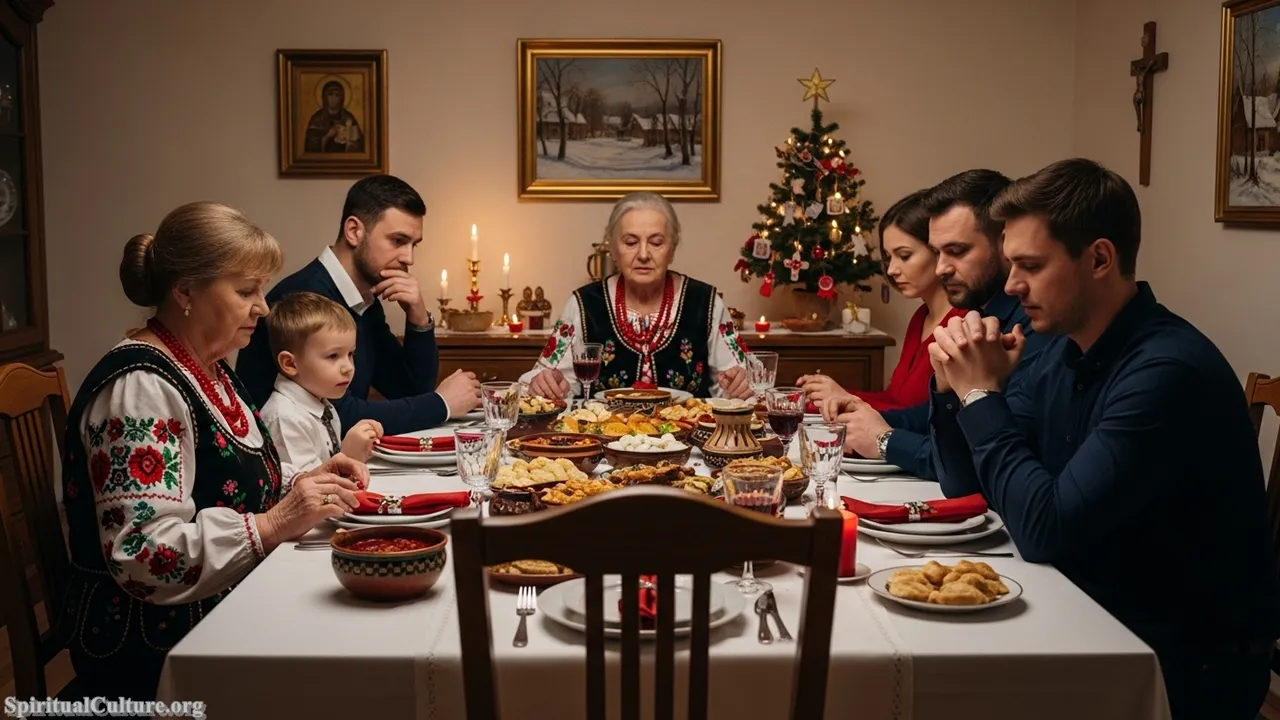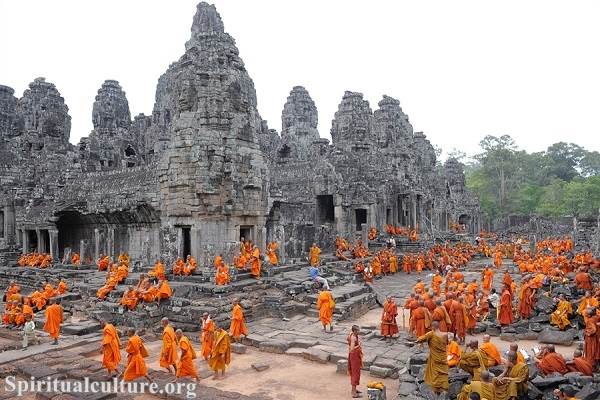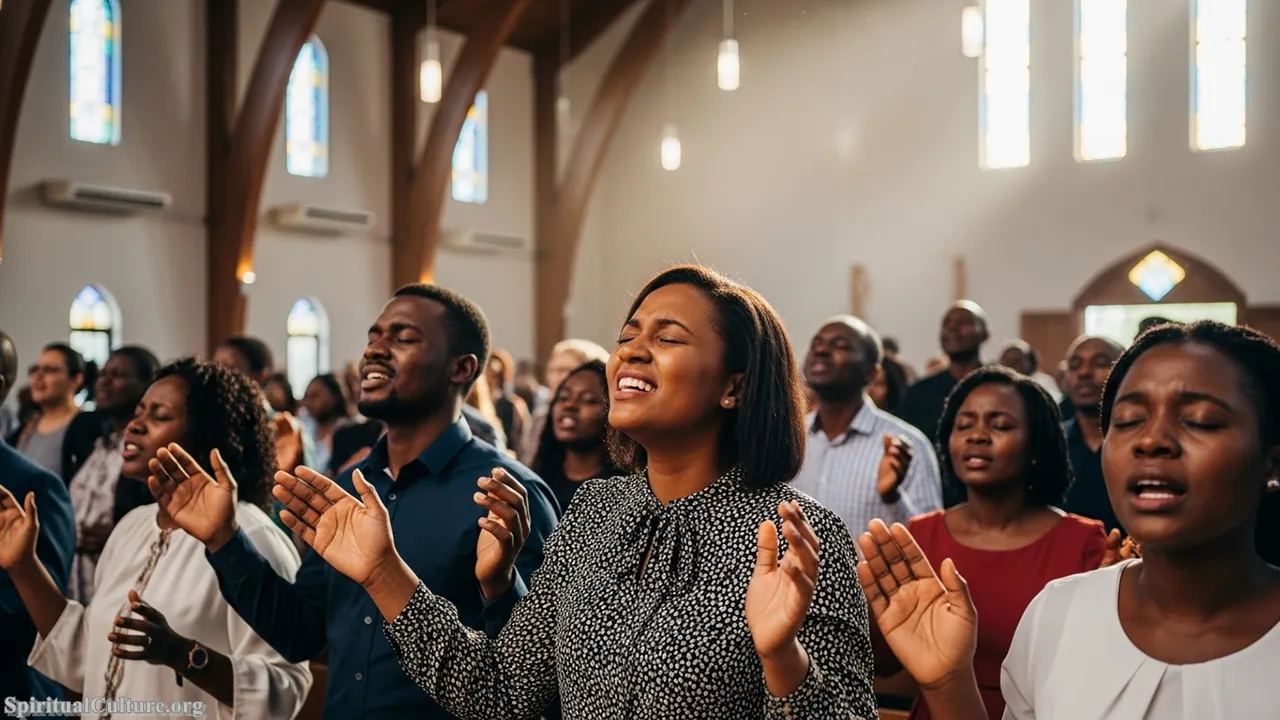Festivals are far more than mere calendar dates; they are profound expressions of human history, spirituality, and cultural identity. They act as essential anchors, connecting generations to ancient narratives and communal values that often resist the rapid pace of modern life. Across every continent, humanity pauses—whether for a quiet moment of spiritual reflection or a massive display of collective joy—to re-enact founding myths, celebrate seasonal transitions, or honor the sacred.
At Spiritual Culture, we believe the true greatness of a festival is not simply measured by attendance figures, but by its deep spiritual resonance and enduring cultural authority. Our ranking focuses on those celebrations that demonstrate the highest levels of historical continuity, global influence (especially within diaspora communities), and deep-seated spiritual or religious significance that continues to shape modern culture.
This Top 10 Guide for the Current Time of Writing explores those global events that serve as potent cultural wellsprings. From ancient rites dedicated to the sun god to massive gatherings that symbolize the triumph of light over darkness, these are the festivals that most effectively articulate the human quest for meaning, community, and the divine.
Table of the Top 10 Most Celebrated Festivals with Profound Cultural and Spiritual Influence
| Rank | Festival | Origin/Primary Location | Spiritual/Cultural Focus |
|---|---|---|---|
| 1 | Kumbh Mela | India (4 Cities) | Hindu Pilgrimage/Ritual Cleansing (UNESCO ICH Status) |
| 2 | Diwali (Deepavali) | India & Global Hindu/Jain/Sikh Diaspora | Triumph of Light Over Darkness/New Beginnings |
| 3 | Chinese New Year (Spring Festival) | China & Global East Asian Diaspora | Ancestral Honor, Renewal, and Family Reunion |
| 4 | Carnival / Mardi Gras (Pre-Lent) | Brazil, New Orleans, Venice & Global Christian Tradition | Final Indulgence Before the Lenten Spiritual Fast |
| 5 | Ramadan / Eid al-Fitr | Global Muslim Communities | Fasting, Prayer, Reflection, and Conclusion of Holy Month |
| 6 | Holi | India & Global Hindu Diaspora | Arrival of Spring, Love, and Good over Evil (Color Play) |
| 7 | Dia de los Muertos (Day of the Dead) | Mexico & Latin America | Honoring Deceased Loved Ones, Celebration of Life |
| 8 | Songkran | Thailand & Southeast Asia | Buddhist New Year, Cleansing, and Respect for Elders |
| 9 | Gion Matsuri | Kyoto, Japan | Ancient Shinto Ritual for Ward against Plague and Purification |
| 10 | Oktoberfest | Munich, Germany | Bavarian Culture/Harvest Celebration & Folk Tradition |
Top 10. Oktoberfest
Originating in Munich in 1810 to celebrate the wedding of Prince Ludwig and Princess Therese, Oktoberfest has evolved into the world’s largest folk festival and a paramount symbol of Bavarian cultural identity. While its modern iteration is famed for massive beer tents and global attendance, at its core, it remains a celebration of the harvest season and regional pride, rooted in historical custom. As of the Current Time of Writing, it attracts millions annually, serving as a powerful, if secularized, rite of community and abundance.

The spiritual impact of Oktoberfest lies not in religious devotion, but in its ability to enforce a deeply human sense of belonging and generational continuity. The traditional clothing (Trachten), the music, and the shared consumption of local produce mark it as a contemporary harvest festival—a communal pause to celebrate the earth’s bounty and the strength of the local community. It is a powerful cultural anchor that resists homogeneity by elevating a specific regional heritage to a global spectacle, ensuring the enduring pride of Bavarian identity.
The preservation value of Oktoberfest is immense, acting as a living museum for folk tradition, music, and culinary heritage. The annual return to the original Theresienwiese grounds reinforces the historical commitment, reminding us that even the most exuberant public celebrations can carry the deep moral lesson of gratitude for abundance and the fundamental importance of community over individualism. It is a testament to the fact that cultural heritage, even in its most festive forms, must be protected and annually reaffirmed.
Cultural/Spiritual Highlights:
- Origins: 1810 celebration of a royal wedding.
- Focus: Celebration of the annual Bavarian harvest and folk tradition.
- Spiritual Value: A secular rite of community bonding and gratitude for abundance.
Top 9. Gion Matsuri
Hailing from Kyoto, Japan, the Gion Matsuri is one of the oldest and most meticulously preserved festivals in the world, with documented origins stretching back to 869 CE. The festival began as a purification ritual (Goryo-e) to appease the gods believed to be responsible for a devastating plague. Today, its central feature is the magnificent procession of Yamaboko floats, which are considered mobile art museums representing Japan’s craftsmanship and artistic continuity.
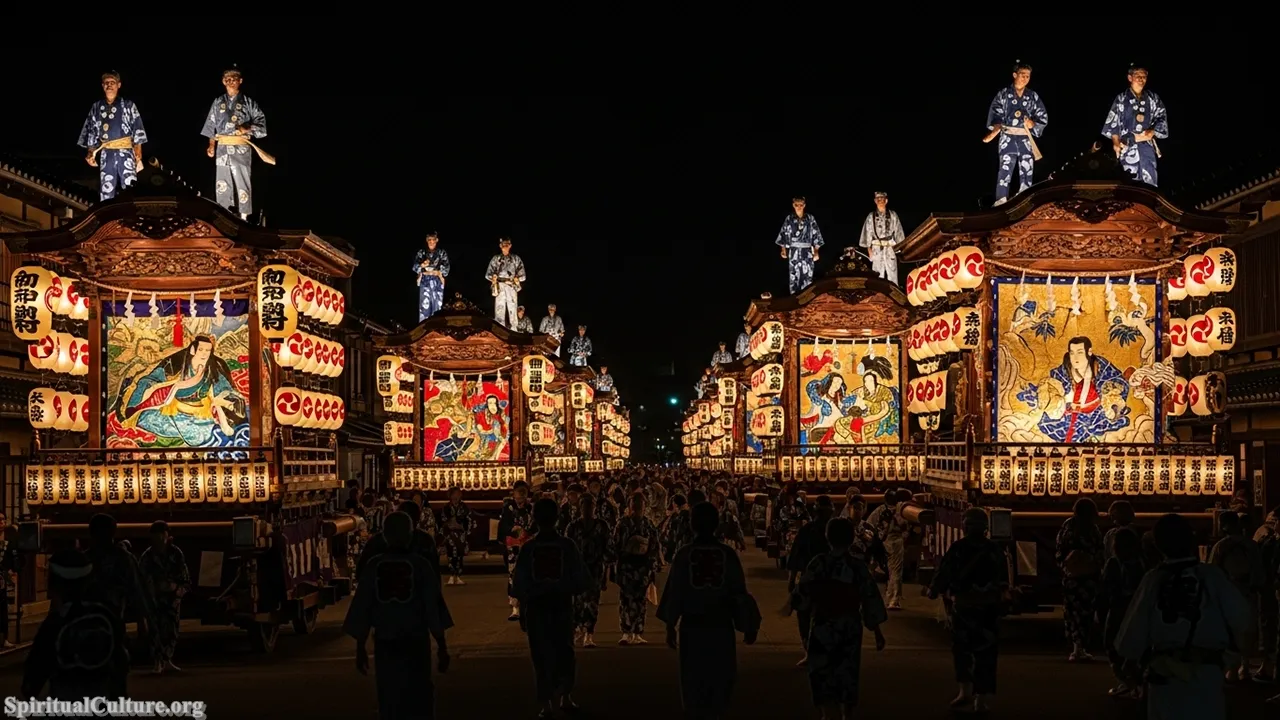
Its profound spiritual importance stems directly from its purpose: the ritual cleansing of the city and the warding off of evil and pestilence. The entire event is a sacred, structured re-enactment of ancient Shinto beliefs, making it a critical piece of Japan’s intangible spiritual heritage. The floats themselves, adorned with tapestries from around the world, symbolically purify the path through the city, offering a deep cultural narrative of humanity’s continuous need for spiritual protection and renewal.
Gion Matsuri is a masterclass in cultural preservation, with families maintaining the traditions, music, and intricate artistry of their floats through generations. This deep-seated commitment provides a powerful moral lesson: that true endurance comes from honoring the past with the utmost care. It reminds onlookers, as of the Current Time of Writing, that solemn ritual and public celebration can coexist as twin pillars of a robust spiritual culture.
Cultural/Spiritual Highlights:
- Origin: Purification rite dating back to 869 CE to ward off a plague.
- Focus: Shinto ritual cleansing of the city of Kyoto; procession of sacred Yamaboko floats.
- Spiritual Value: Collective spiritual defense and the power of tradition to ensure safety.
Top 8. Songkran
Songkran, the traditional New Year celebrated in Thailand and across Southeast Asia, marks the solar calendar’s transition and the beginning of the Buddhist New Year. As of the Current Time of Writing, it is famous globally for its joyous water-splashing component, but this modern revelry is rooted in a deeply symbolic cleansing ritual. The festival is traditionally a time for community members to visit temples, offer food to monks, and gently pour water over the hands of elders as a mark of respect and a blessing for good fortune.
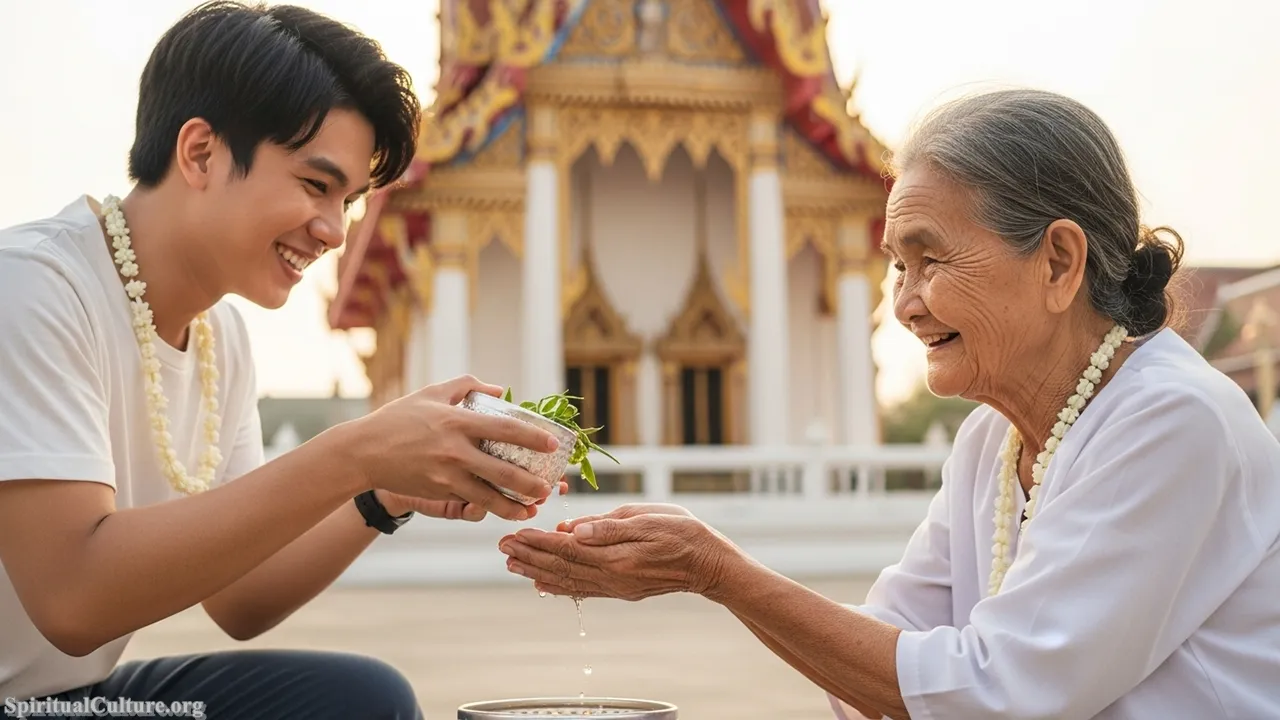
The spiritual impact of Songkran is centered on purification and renewal. The water itself symbolizes the washing away of one’s sins and bad luck from the previous year, allowing individuals to enter the new cycle with a clean slate. This is reinforced by the practice of bathing Buddha images. It is a powerful act of collective spiritual house-cleaning, emphasizing core Buddhist principles of compassion, gratitude, and the generational transfer of spiritual wisdom and respect for one’s ancestors and community leaders.
The preservation of Songkran’s core elements—the temple visits, the reverence for family, and the ceremonial use of water—provides a crucial lesson in integrating the sacred into everyday life. While public celebrations have become boisterous, the underlying value system of respect and purification endures, reminding Spiritual Culture readers that every New Year is, at its heart, an opportunity for moral and spiritual rebirth.
Cultural/Spiritual Highlights:
- Origin: Traditional Buddhist New Year celebration.
- Focus: Ceremonial water cleansing to wash away bad luck; offering respect to monks and elders.
- Spiritual Value: Purification, renewal, and the affirmation of family and Buddhist community.
Top 7. Dia de los Muertos (Day of the Dead)
Celebrated primarily in Mexico and parts of Latin America, Dia de los Muertos, or Day of the Dead, is a vibrant and spiritually profound holiday held from October 31st to November 2nd. Far from being a morbid event, it is a joyous celebration and affirmation of life, recognizing the cyclical nature of existence. Families construct elaborate altars (ofrendas) adorned with marigold flowers, favorite foods of the deceased, and calaveras (skulls), to guide and welcome the spirits of departed loved ones back for a brief visit.
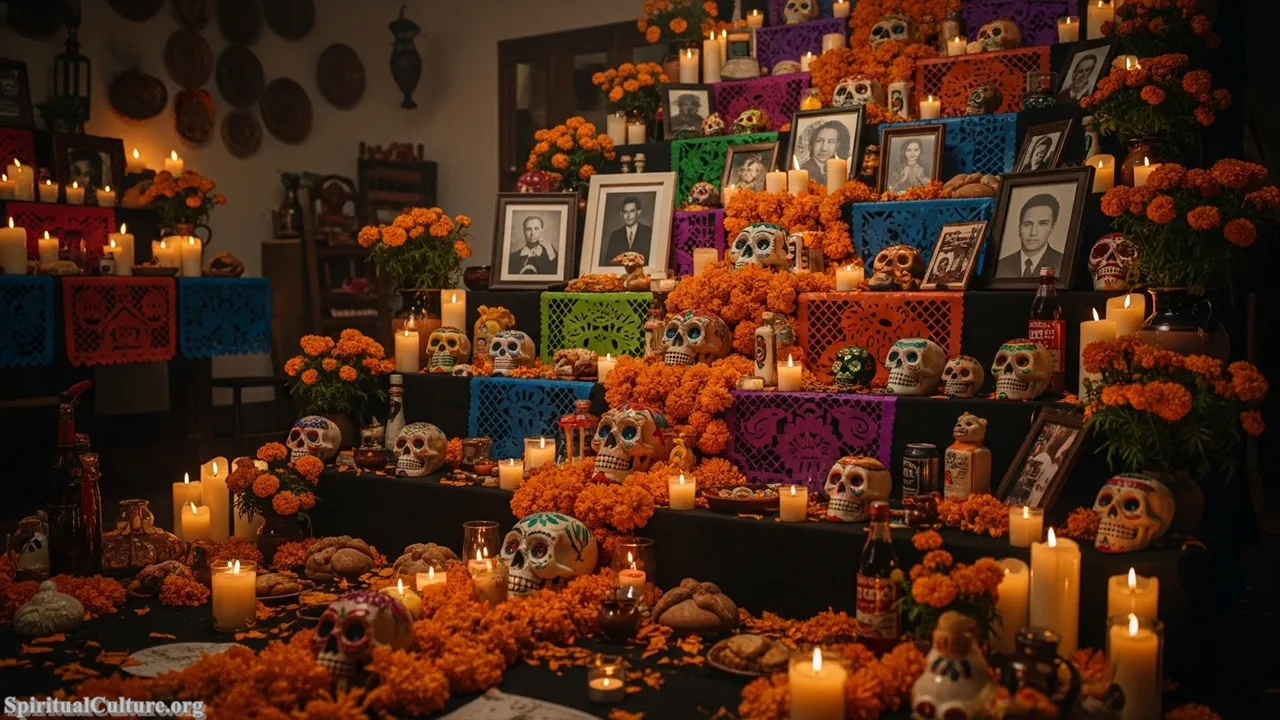
The spiritual impact is immense, stemming from the pre-Hispanic indigenous beliefs that view death as an integral stage of life, not an ending. The festival is a communal act of remembrance that dissolves the fear of death by integrating it into the family circle. This deeply humanistic spiritual practice strengthens familial bonds across the visible and invisible worlds, reinforcing the cultural belief that as long as one is remembered, one truly lives on. The UNESCO-recognized tradition powerfully articulates a spiritual perspective on continuity and memory.
The enduring popularity and formal recognition of Dia de los Muertos offer a powerful reflection on preservation: it demonstrates how a culture can hold on to its most sacred traditions in the face of external pressures. The moral lesson is the absolute necessity of memory and the love that transcends physical life, teaching all of us, as of the Current Time of Writing, that honoring our lineage is the foundation of a spiritually complete life.
Cultural/Spiritual Highlights:
- Origin: Indigenous Mesoamerican traditions merged with Catholic All Souls’ Day.
- Focus: Celebration of life and honoring deceased loved ones with altars (ofrendas).
- Spiritual Value: Affirmation of the cyclical nature of life and death; UNESCO Intangible Cultural Heritage.
Top 6. Holi
Holi, the Hindu Festival of Colors, is celebrated across India and its global diaspora, primarily marking the arrival of spring, the end of winter, and the triumph of good over evil. The festivities begin with a solemn Holika Dahan bonfire ceremony, symbolizing the burning of the demon Holika, followed by a day of unrestrained, joyous color play. As of the Current Time of Writing, the public revelry of throwing colored powders (gulal) and water is a spectacular display of social leveling.
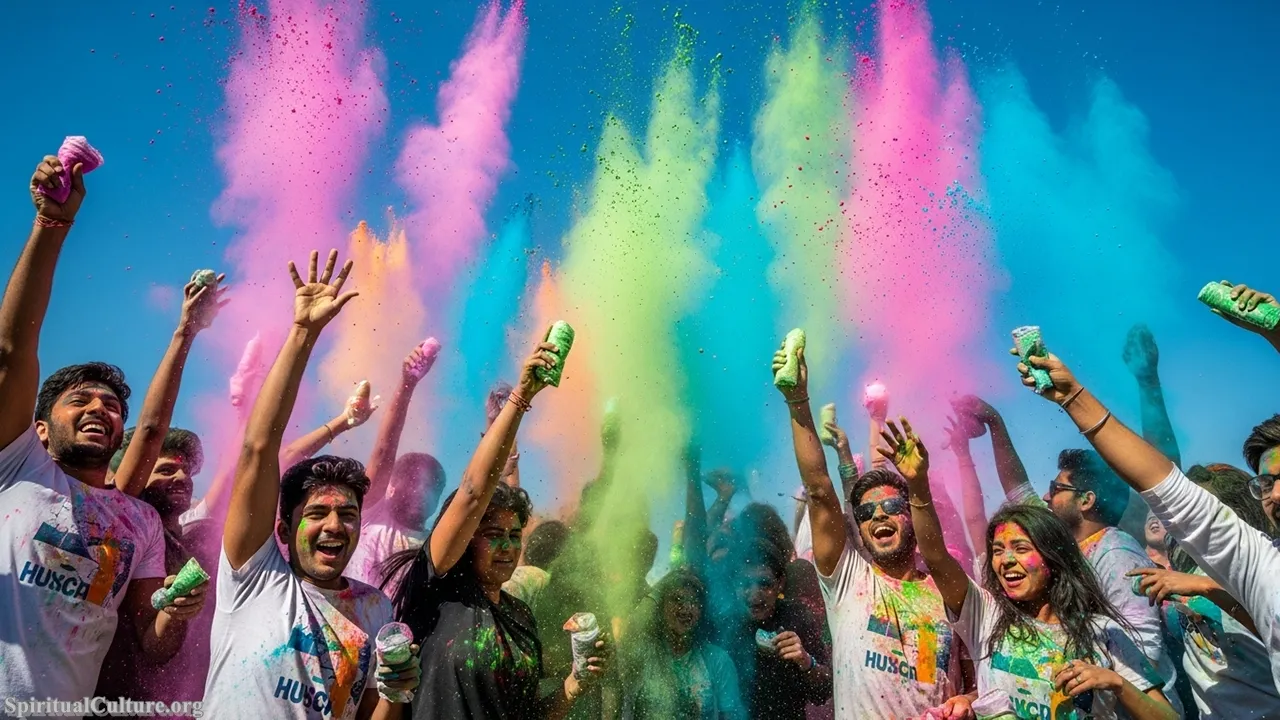
The spiritual impact of Holi is one of profound, temporary social and spiritual leveling. In the kaleidoscope of colors, social distinctions of caste, class, age, and gender are momentarily dissolved, allowing people to embrace and connect with spiritual purity and equality. It is a festival rooted in the Hindu mythology of Radha and Krishna and the victory of devotion (Bhakti) over malevolence, reinforcing the core philosophical teaching of good triumphing over darkness and the spiritual renewal that comes with the spring season.
The preservation value lies in its communal nature. Holi requires collective participation, teaching the moral lesson that harmony and community reconciliation are central to spiritual health. By playing with color, participants symbolically wash away grievances and reset relationships, providing a powerful, annual catharsis that ensures the social and spiritual fabric of the community remains vibrant and resilient for the future.
Cultural/Spiritual Highlights:
- Origin: Hindu tradition; stories of Radha-Krishna and Prahlad-Holika.
- Focus: Celebration of Spring, love, and the victory of good over evil.
- Spiritual Value: Social leveling, forgiveness, and purification through the symbolic use of colors.
Top 5. Ramadan / Eid al-Fitr
Ramadan is the ninth and holiest month in the Islamic calendar, observed by Muslims worldwide as a period of fasting, prayer, reflection, and community. From sunrise to sunset, adherents abstain from food and drink, focusing instead on spiritual self-improvement, increased devotion, and charity (Zakat). The month culminates in the joyous three-day festival of Eid al-Fitr, or the ‘Festival of Breaking the Fast’, marking a return to normal life and celebrating the spiritual strength gained.
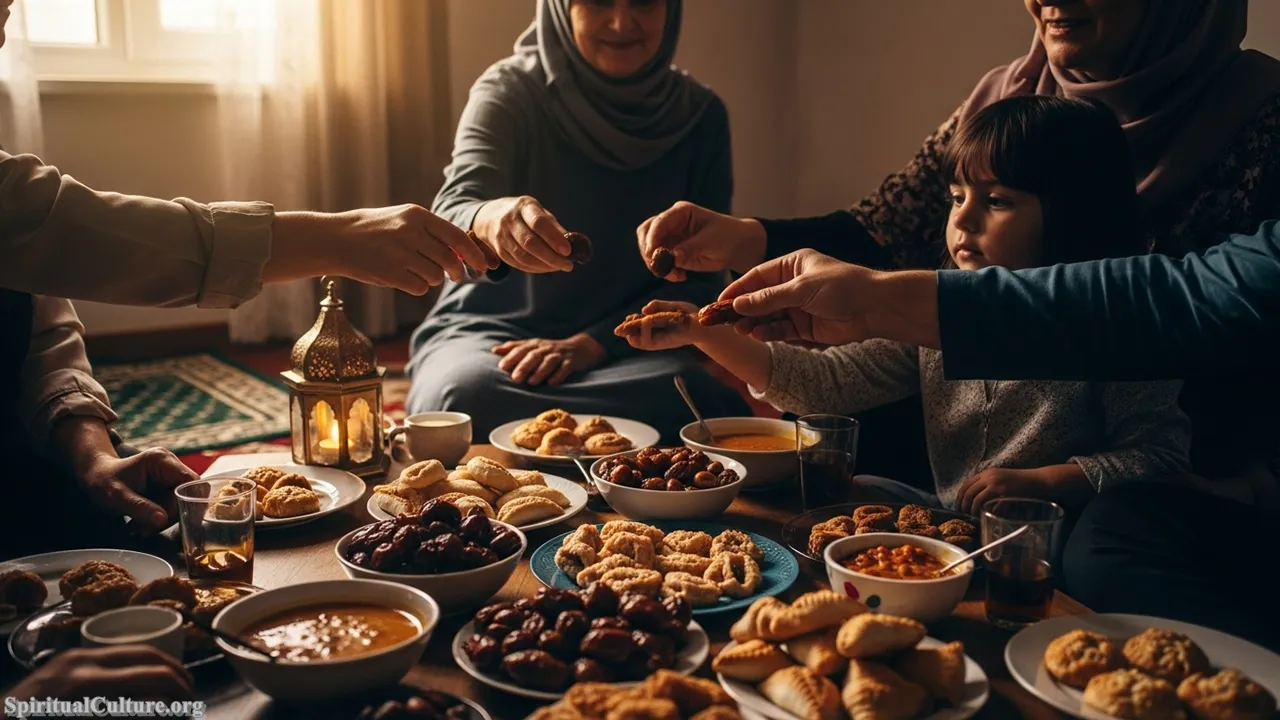
The spiritual impact of Ramadan is unparalleled, involving a collective, global commitment to self-discipline and empathy. By voluntarily experiencing hunger and thirst, adherents gain a profound, spiritual connection to the suffering of the less fortunate, fostering a heightened sense of charity and social responsibility, which is a core tenet of Islam. The act of fasting is an interior, purifying ritual—a spiritual detox that resets one’s relationship with the Divine and affirms one’s submission to faith (Islam).
As a foundational pillar of Islam, the observance of Ramadan and the celebration of Eid al-Fitr offer a crucial moral lesson in endurance and compassion. The global scale of the practice, consistent for over 14 centuries, underscores its monumental preservation value. It teaches that true spiritual growth requires sacrifice and discipline, but culminates in a communal, heartfelt celebration of grace and thanksgiving for having the spiritual fortitude to complete the fast.
Cultural/Spiritual Highlights:
- Origin: Ninth month of the Islamic calendar, commemorating the first revelation of the Quran to Prophet Muhammad.
- Focus: Daily fasting (Sawm), spiritual reflection, increased prayer, and charity (Zakat).
- Spiritual Value: Self-purification, empathy for the poor, and submission to Allah’s will.
Top 4. Carnival / Mardi Gras (Pre-Lent)
Celebrated in various forms globally, from the colossal parade in Rio de Janeiro and the boisterous spectacle of New Orleans’ Mardi Gras to the historical mask-wearing of Venice, Carnival represents the final, unrestrained indulgence before the Christian season of Lent. Rooted in Catholic traditions, the timing is fixed to occur just before Ash Wednesday, with the celebrations often stretching for weeks. As of the Current Time of Writing, these festivals are a potent blend of Christian religious calendar and deeply ingrained local folk traditions.
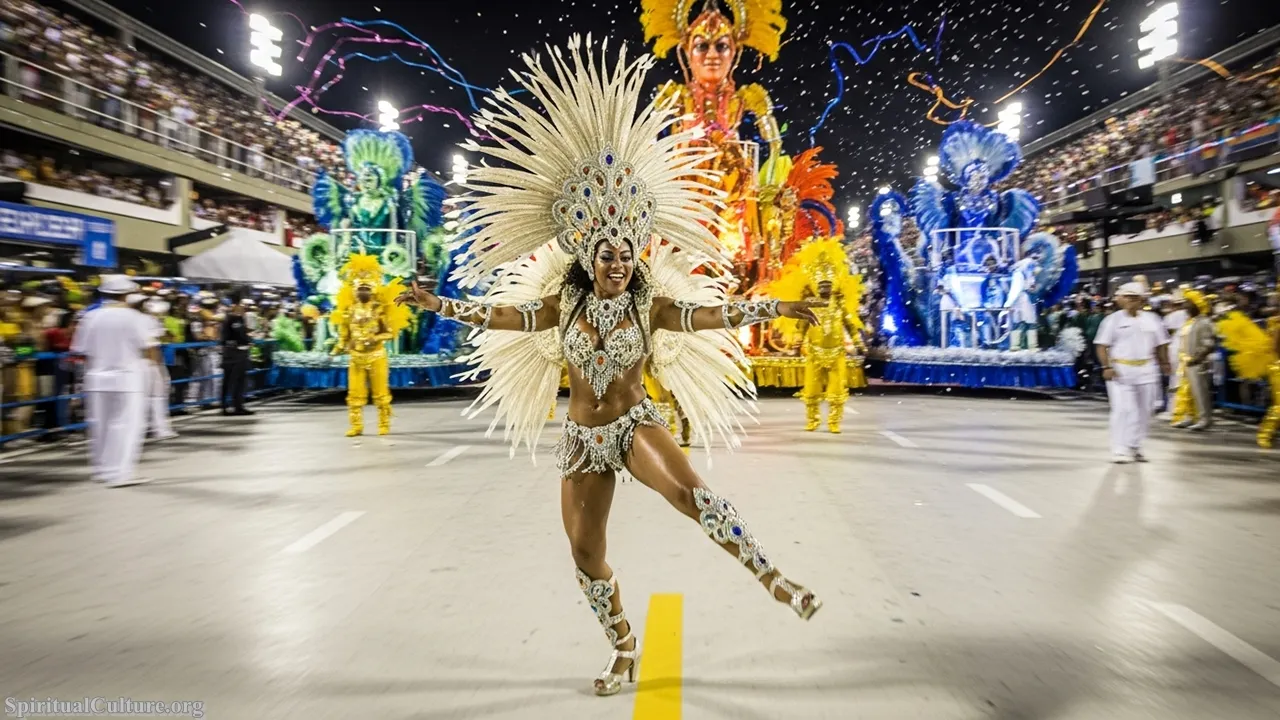
The spiritual significance is an act of inversion, a pressure valve before the spiritual restraint and introspection of Lent. Historically, it was a necessary moment of social and spiritual chaos, where societal roles were temporarily reversed and taboos broken, allowing communities to collectively purge their energies before the 40 days of penance. The masks and costumes symbolize this spiritual anonymity and freedom, emphasizing the duality in the human experience between earthly joy and spiritual duty.
The preservation of Carnival, particularly in centers like Rio where samba schools spend all year preparing, speaks to the critical cultural need for a collective expression of identity and passion. It provides the moral lesson that even spiritual paths require periods of boisterous, humanistic celebration to make the subsequent period of spiritual discipline meaningful. This cultural endurance makes it a monumental force in global heritage.
Cultural/Spiritual Highlights:
- Origin: Traditional European pre-Lent Catholic feasting and folk celebration.
- Focus: Final indulgence (Carnevale) before the 40-day Lenten fast; social inversion.
- Spiritual Value: A necessary communal release before a period of spiritual discipline and penance.
Top 3. Chinese New Year (Spring Festival)
Chinese New Year, or the Spring Festival, is the most significant holiday for over a billion people in China and across the global Chinese and East Asian diaspora. Marking the start of the lunar new year, the celebration revolves centrally around the spiritual practice of honoring ancestors and ensuring good fortune for the coming year. As of the Current Time of Writing, it triggers the largest annual human migration on Earth, as hundreds of millions travel home for the crucial family reunion dinner and ancestral rites.
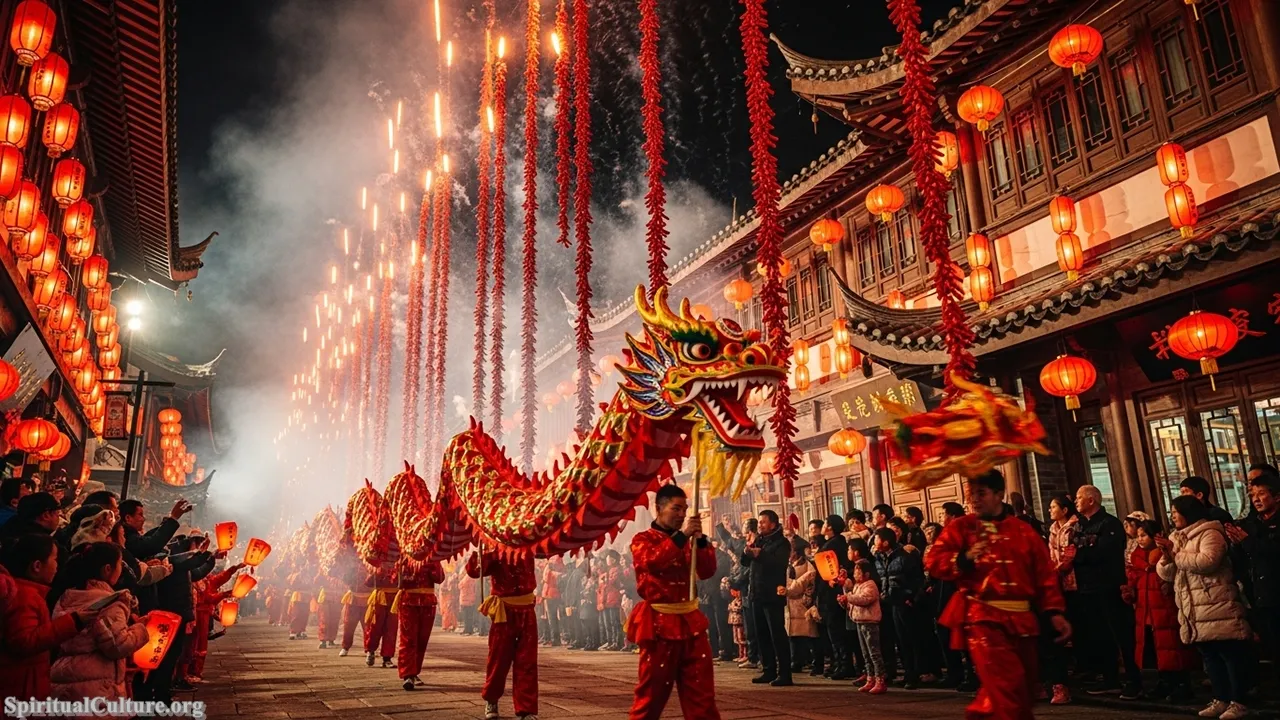
Its profound spiritual impact lies in its absolute focus on the sanctity of family, lineage, and cosmic renewal. Practices like cleaning the house to sweep away ill-fortune, giving red envelopes (hóngbāo) of money for blessings, and performing dragon and lion dances are all spiritual affirmations of hope, protection, and continuity. It is a cultural system that places the reverence for ancestors at the heart of daily life, connecting the prosperity of the present directly to the wisdom and blessings of the past.
The monumental preservation value of the Spring Festival is evident in its global consistency and unwavering commitment to its core rituals, regardless of where in the world it is celebrated. The moral lesson is the spiritual power of tradition and the enduring strength of the family unit, reminding Spiritual Culture that personal well-being is intrinsically linked to the collective health and historical memory of one’s lineage.
Cultural/Spiritual Highlights:
- Origin: Ancient lunar calendar tradition tied to agricultural cycles.
- Focus: Family reunion, ancestral worship, and ushering in good fortune for the new year.
- Spiritual Value: The sacred importance of lineage, filial piety, and cosmic renewal.
Top 2. Diwali (Deepavali)
Diwali, the Festival of Lights, is the most important holiday for Hindus, Jains, and Sikhs worldwide, celebrated over five days in autumn. It is a universal spiritual message: the triumph of light over darkness, good over evil, and knowledge over ignorance. The lighting of clay lamps (diyas) and the elaborate worship (puja) of Goddess Lakshmi for prosperity and Lord Ganesha for wisdom are practices that spiritually anchor millions of families annually as of the Current Time of Writing.
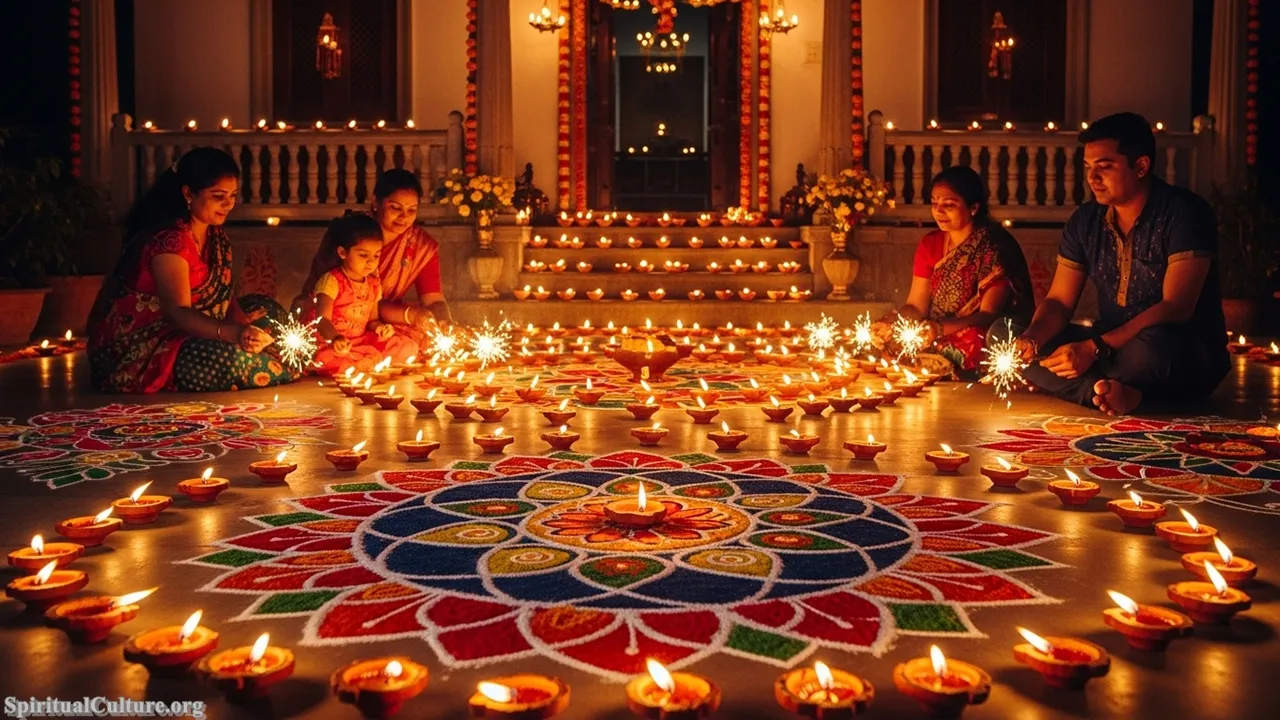
The spiritual impact is one of profound internal and external cleansing. The festival encourages people to reflect on and expel inner darkness, symbolized by the cleaning of homes and the lighting of the diya—a symbolic welcoming of the divine into the home and the soul. For Jains, it marks the attainment of moksha by Mahavira, and for Sikhs, the day of liberation of Guru Hargobind, showcasing a powerful, unifying spiritual message across multiple Dharmic faiths centered on light, freedom, and purity.
Diwali’s global observance provides a timeless moral lesson in hope and resilience. It affirms that after every period of struggle or darkness—whether personal, societal, or historical—light and truth will ultimately prevail. Its preservation as an intensely spiritual family and community event ensures the transmission of these core Dharmic values of ethical living, generosity, and inner illumination to every subsequent generation.
Cultural/Spiritual Highlights:
- Origin: Hindu, Jain, and Sikh traditions; rooted in the return of Lord Rama.
- Focus: Triumph of light over darkness and good over evil; worship of Lakshmi and Ganesha.
- Spiritual Value: Inner and external illumination, prosperity, and spiritual freedom across multiple faiths.
Top 1. Kumbh Mela
The Kumbh Mela stands, by all measures of spiritual gravity and human participation, as the single most celebrated festival in the world. Alternating between four sacred sites in India every twelve years, this colossal Hindu pilgrimage attracts tens of millions of devotees—the largest peaceful gathering of humanity on Earth. This UNESCO Intangible Cultural Heritage event is rooted in the ancient myth of the gods and demons fighting over the pot (kumbha) of Amrita, the elixir of immortality, with drops falling at the four holy sites.
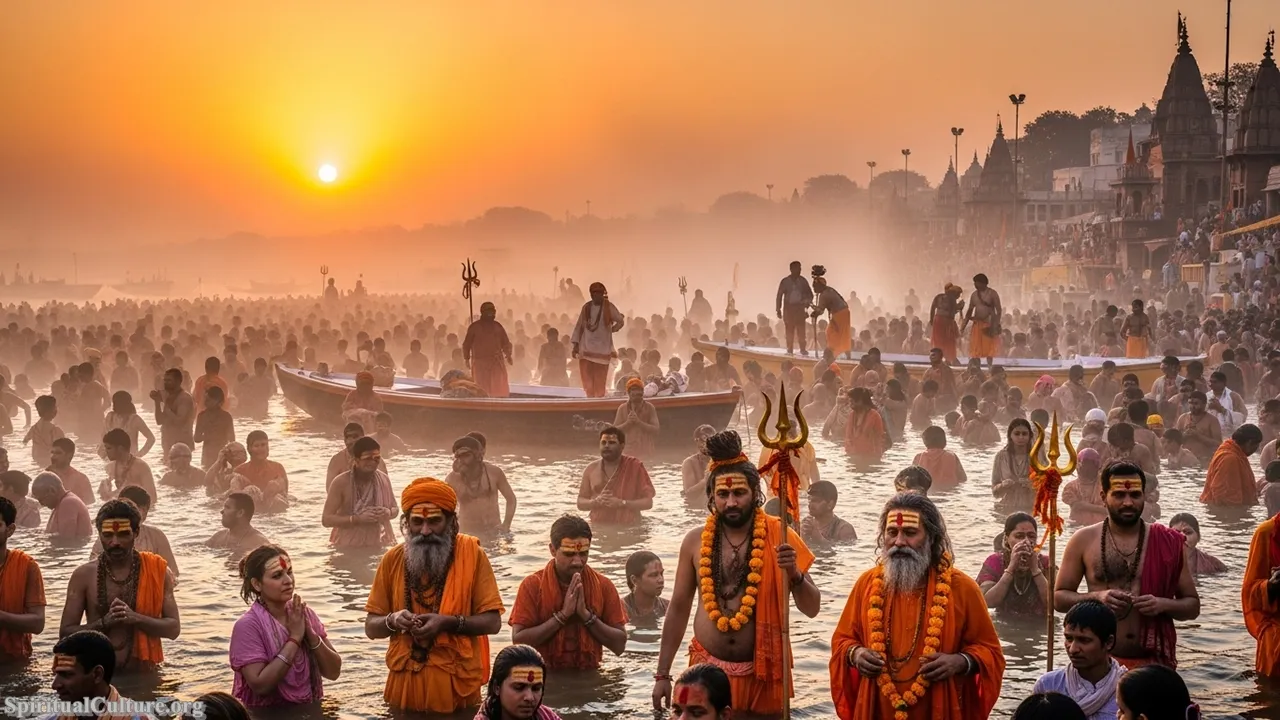
Its spiritual impact is nothing short of transcendent. The central ritual, the Shahi Snan (Royal Bath), is the belief that bathing in the confluence of the sacred rivers at the astrologically precise moment cleanses one of all sins and grants moksha (liberation from the cycle of rebirth). The mela is a living university of Hindu philosophy, where Sadhus (holy men) and gurus of countless sects gather to transmit ancient knowledge, reinforcing the deep, living spiritual fabric of the world’s third-largest religion. Its scale is an expression of spiritual democracy.
The preservation and continuation of the Kumbh Mela for millennia offers Spiritual Culture a defining moral lesson in the human dedication to spiritual truth. It proves that despite modernization, the deep-seated yearning for sacred purpose and ultimate freedom from worldly bonds remains the most powerful organizing force for humanity. As of the Current Time of Writing, its very existence is a miracle of faith and logistics, a celebration that affirms the timeless power of devotion over all material concerns.
Cultural/Spiritual Highlights:
- Origin: Ancient Hindu pilgrimage, attributed to 8th-century philosopher Shankara and Puranic myths.
- Focus: Ritual bath (Shahi Snan) in sacred rivers for cleansing sins and attaining moksha.
- Spiritual Value: Largest peaceful human gathering; UNESCO Intangible Cultural Heritage of Humanity.
Conclusion
The world’s most celebrated festivals, as detailed by Spiritual Culture, serve as annual global checkpoints for human values. From the immense spiritual currents of the Kumbh Mela to the intimate, yet profound, act of remembering ancestors in Dia de los Muertos, these events demonstrate a core truth: humanity’s need for transcendence and connection is universal and inextinguishable. They are not merely parties; they are mandatory cultural and spiritual commitments that define entire civilizations.
By focusing on the cultural and spiritual endurance of these Top 10, we gain a deeper appreciation for the resilience of the human spirit. They offer us the chance to step outside the mundane, to participate in something larger than ourselves, and to renew our commitment to the values—be they love, purification, family, or freedom—that underpin a meaningful life. The vibrant celebrations documented as of the Current Time of Writing are a collective heritage we must all celebrate and strive to preserve.

